Table of Contents Show
Cults have long been associated with the state of California. Children of God, Heaven’s Gate, the Manson Family1, and several others all sowed their roots in the Golden State. For writer Kate Flannery2, encountering a cult was one of her first memorable experiences after moving to Los Angeles in the early 2000s.
Of course, Flannery did not fall for the first cult she stumbled across; she was an educated and aware young woman who, like most, believed she was not naive enough to be indoctrinated. However, as her 2023 memoir Strip Tees asserts, it is not nearly as difficult to fall victim to a cult as one may imagine.
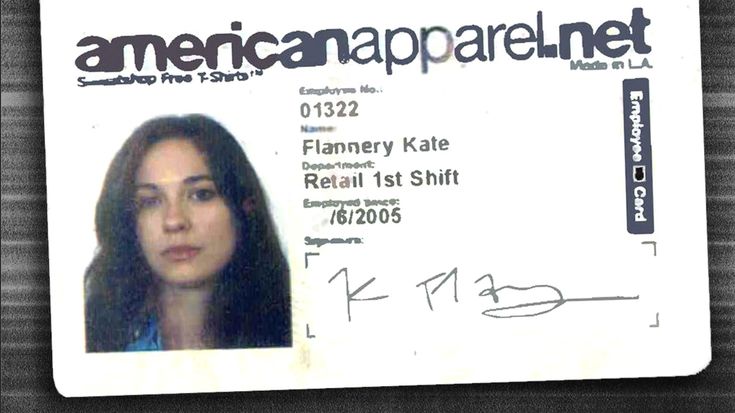
Flannery’s tell-all memoir exposes the dark side of one of the United States’ most successful clothing retailers, “American Apparel,” and how founder and former CEO Dov Charney built a fashion empire and a predatory cult effortlessly side by side. Flannery’s text doubles as a tactical guide, outlining the contemporary strategies cult leaders like Charney utilize to draw in twenty-first-century devotees, including a promising ideology that adopts the principles of philanthropy, feminism, and the allure of sexual liberation.
Strip Tees (2023) follows Flannery’s time as an “American Apparel girl,” documenting her transition from innocence to experience and ultimately reminding readers that when something seems too good to be true, it probably is.
American Apparel
American Apparel was a popular clothing manufacturer, distributor, and retailer known for its “Made in USA” products. Founded in 1989 by Dov Charney, the brand reached its peak of popularity in the early 2000s and was best known for its basic, trendy clothes and provocative advertising campaigns.
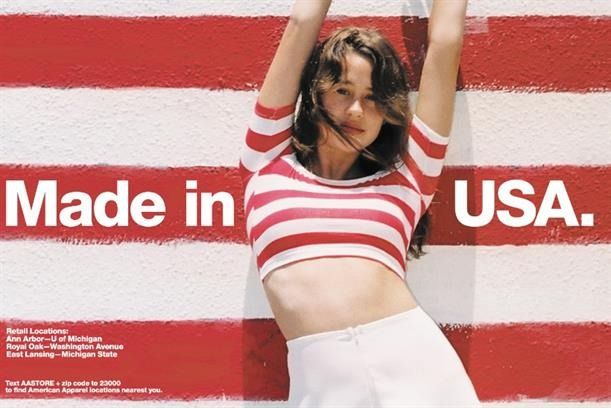
American Apparel made a significant cultural impact, but it was not all smooth sailing. The company was forced to declare bankruptcy twice3, and various factors led to its downfall. Firstly, American Apparel grew very quickly, opening stores and expanding at an unprecedented rate across the United States4. Secondly, to overcome the 2008 financial crisis, a significant portion of the company was sold in shares5, resulting in management being passed around. Eventually, the manufacturing of garments was outsourced overseas6, which contradicted American Apparel’s entire business model.
Additionally, the company faced countless controversies and lawsuits, many of which were tied to and eventually catalyzed the eventual firing of its founder, Dov Charney, in 20187.
Dov Charney — Philanthropist, Cult Leader, Entrepreneur
Dov Charney was behind American Apparel for many years and started the business with a noble goal. Charney created all American Apparel garments in the United States, particularly in his factory in downtown Los Angeles, where he paid workers a competitive wage and liberated many recent migrants from terrible working conditions. As a result, Charney turned the American Dream into a reality for many while proving to his competitors that it was both possible and desirable to run an ethical business.
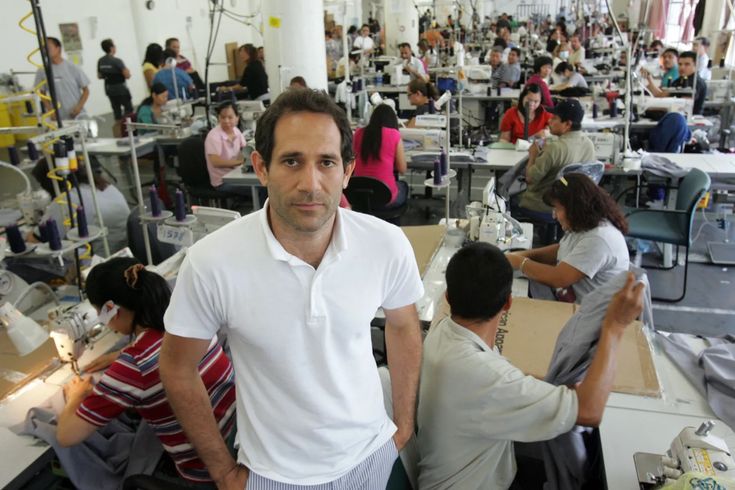
In Strip Tees, Kate Flannery recounts the first time she saw inside the pink American Apparel factory located in downtown Los Angeles. The encounter takes place towards the beginning of the book after Flannery is scouted by an American Apparel employee and invited to tour the facility. The experience leaves Flannery starstruck, both by the efficiency of the labor force and by American Apparel’s commitment to providing a safe, supportive, and ethical working environment. The veneer of security and a workforce that operates like a tight-knit community dedicated to looking out for one another was one of the many factors that drew in devoted recruits, many of whom internalised that whatever they endured while working at American Apparel was ultimately for some kind of greater good.
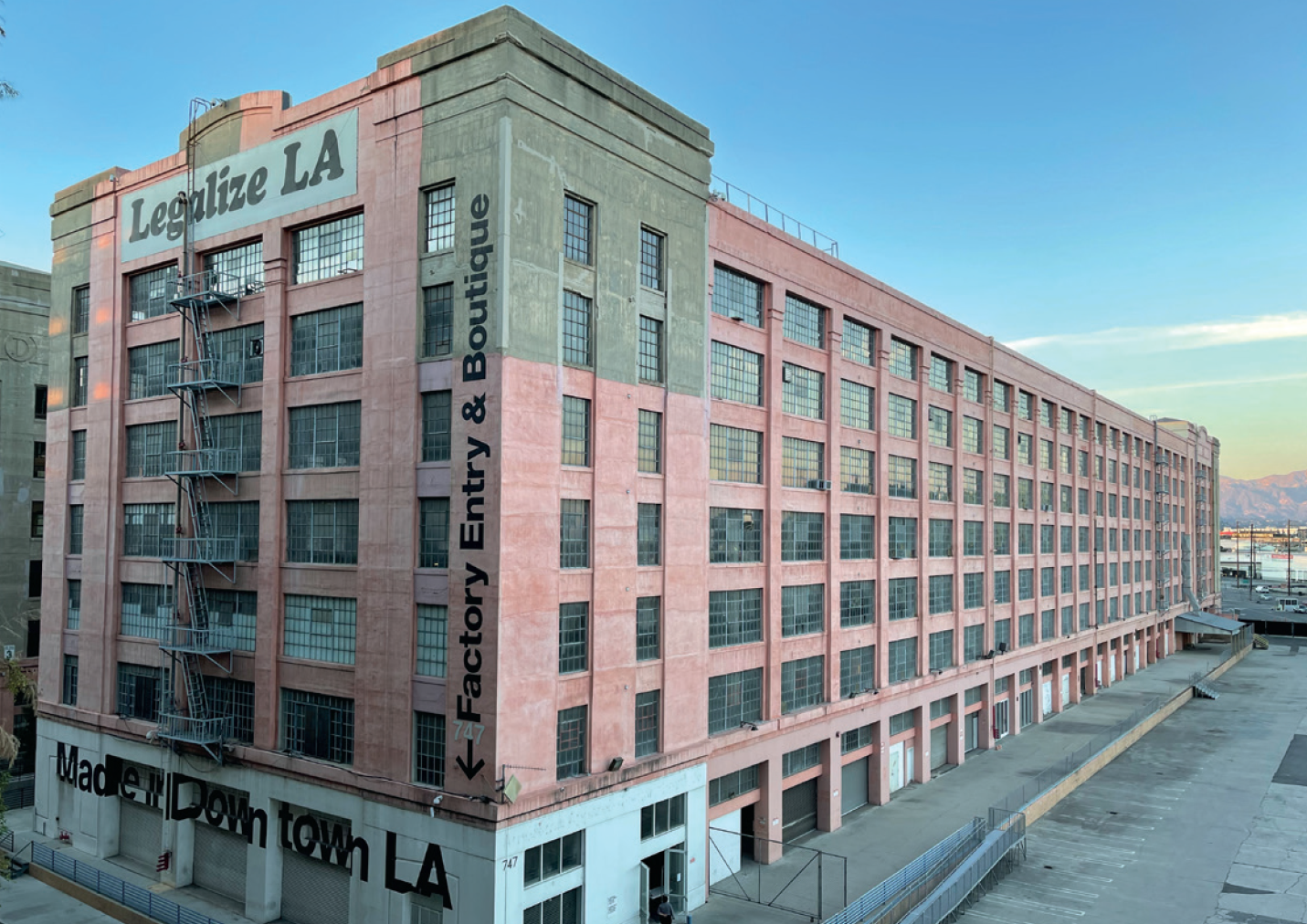
“We stepped onto the fourth floor, a bright open space filled with windows and light, humming with sewing machines. Dozens of garment workers worked side by side in smooth choreography to create quivering piles of kelly-green men’s underwear…These undies were made by skilled laborers, compensated fairly for their efforts instead of being sucked dry by the capitalist parasite…It was such a simple concept—treat your employees like human beings and be richly rewarded.”
Flannery, Kate. Strip Tees. MacMillan Publishers. 2023. pg. 24-25.
Charney’s Allegations
However, Charney’s dedication to ethics was not universal. The CEO faced numerous allegations during his time at American Apparel, primarily centered around sexual harassment and misconduct. Several former employees have accused Charney of creating a highly sexualized work environment, with claims ranging from inappropriate comments to engaging in sexual relationships with subordinates.
For instance, in 2005, former store manager Mary Nelson accused Charney of gender-based discrimination and sexual harassment, including making inappropriate comments, engaging in physical misconduct, and creating an unsafe work environment8. Further, In 2011, Irene Morales, a former employee, filed a lawsuit against Charney, alleging that he had kept her as a virtual prisoner in his apartment and forced her to perform sexual acts9.
This is just the beginning of the allegations against Charney. Even outside of a legal context, his reputation for sleeping with and exposing himself to employees has been well documented.
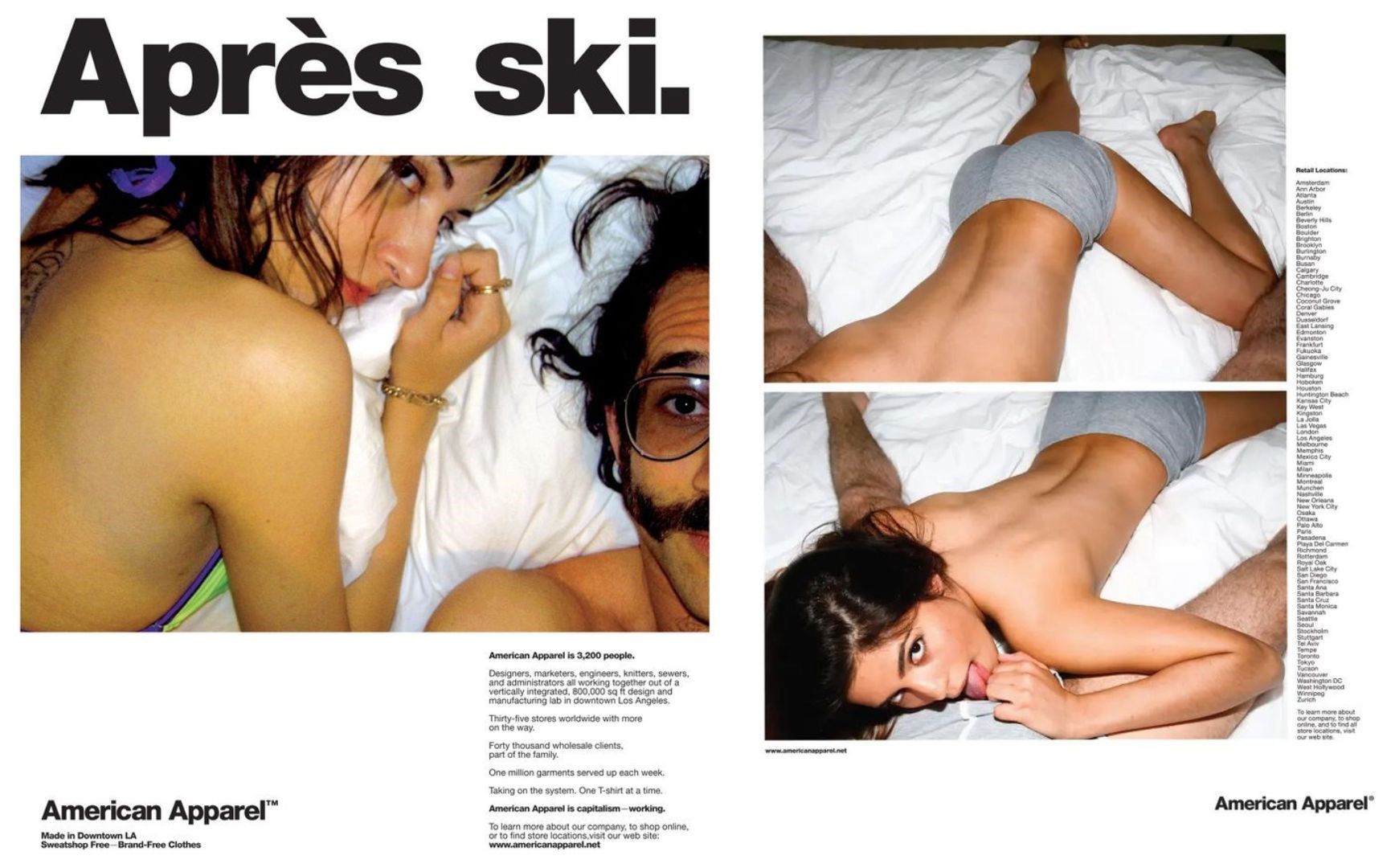
Concerning this, the deification of Charney at American Apparel had a significant impact on his failure to be held accountable for a plethora of sexual harassment allegations. As is documented in Strip Tees, the unwavering devotion to Charney is not just figurative or a symptom of his influence, for Flannery recounts the time she saw Charney for the first time, parading himself around like a celebrity, basking in the adoration of his workers. For many marginalized American Apparel factory workers, Charney represented a break from exploitation and the dawn of a revolution.
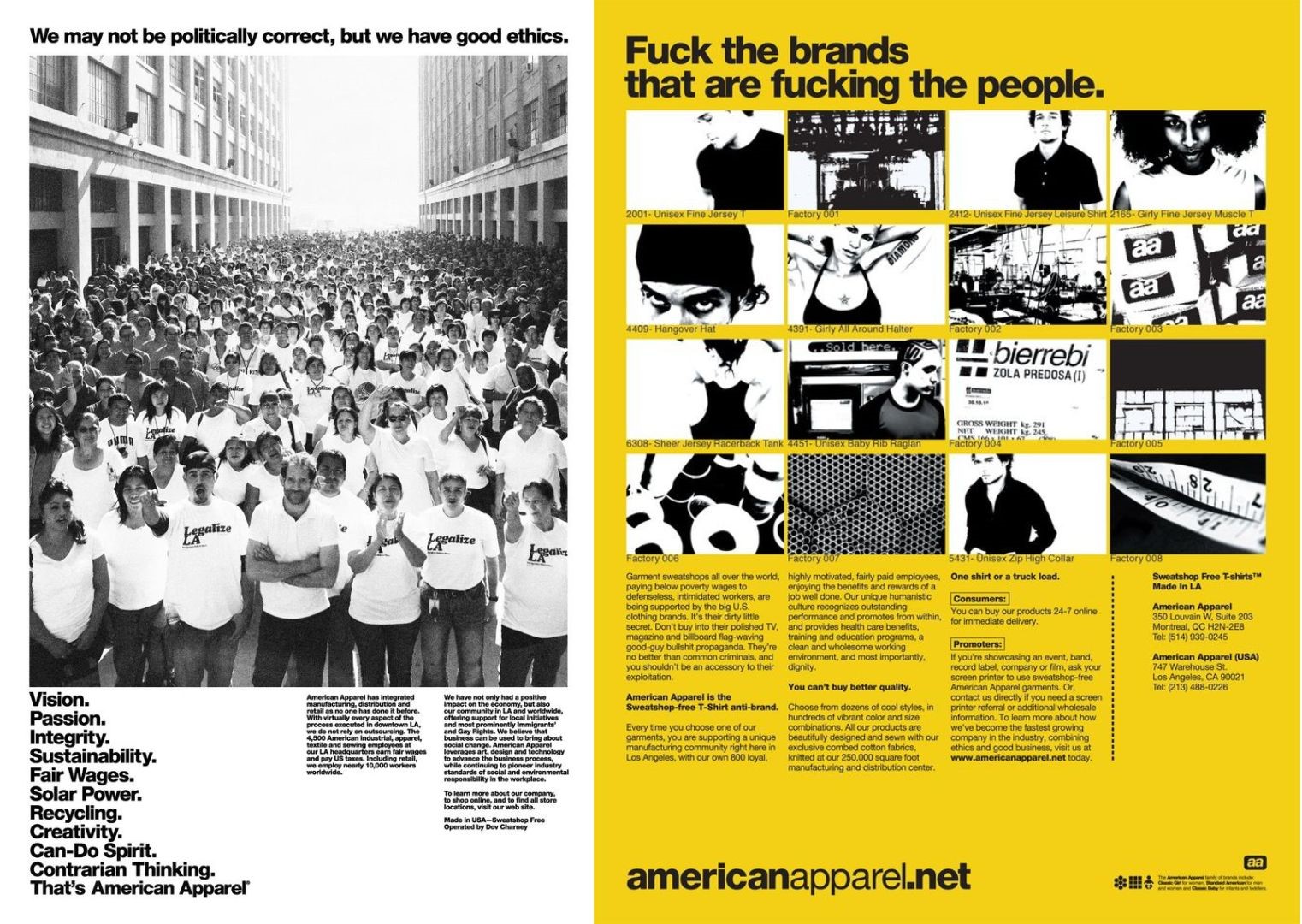
“Out of a swinging door emerged a little man in a pair of aviator shades, bouncing with manic energy. He was high-fiving the outstretched hands of the workers closest to him…The workers cheered louder as he gave the air a few pumps. He stood still for a second or two, basking in the adulation, and then disappeared through the swinging door, gone as quickly as he came.”
Flannery, Kate. Strip Tees . Macmillan Publishers. 2023. pg. 26.
Sexual Misconduct And Abuse Of Power
Not unlike the cult leader she later implies he was, Flannery reports that Charney was incredibly charismatic and dedicated to upholding the façade of the model boss who took care of his workers like they were family. However, in this position, Charney acted in an unorthodox and offensive manner, while his devotees were made to tolerate and accepted his radical behavior.
Flannery provides ample evidence of these encounters in Strip Tees, including an incident early in her tenure at the first American Apparel retail store in Echo Park. She recalls encountering Charney having a sexual encounter in the dressing room with a young American Apparel employee. Although Flannery was conflicted about the confrontation, she disregarded it at the time as a mere performance in sexual liberation and the breaking down of social norms—all part of the American Apparel revolution.
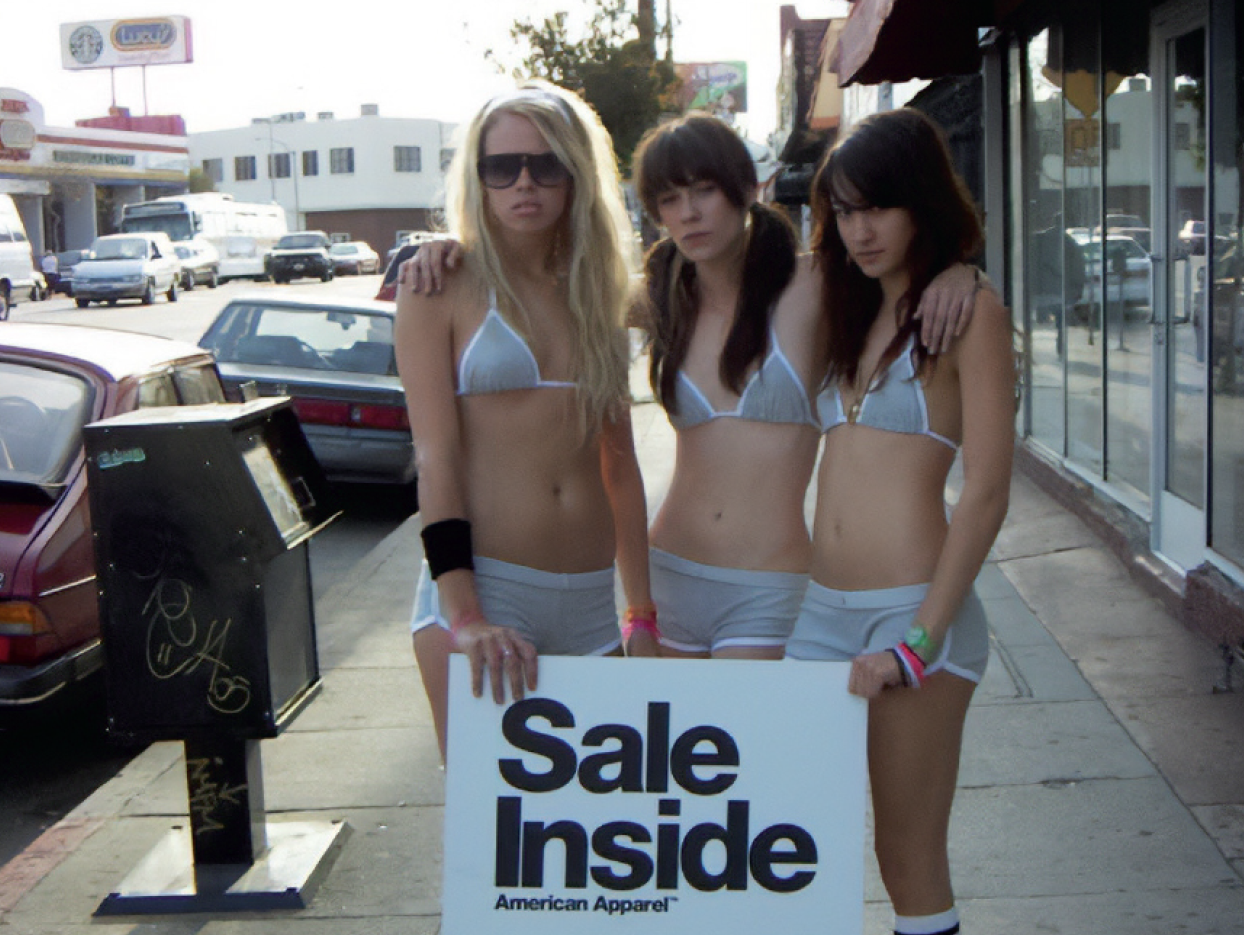
Flannery, amongst others, used this justification to continue to tolerate Charney’s antisocial behavior, including later in the narrative when Charney confronts a group of employees about having his sexual harassment charges dismissed10 and celebrates by exposing himself to them.
“He was holding up his hand for high fives and dancing like he’d scored a touchdown… It was easy to get swept up in—Dov’s charisma… I started clapping for him along with the others… Suddenly he leaped to his feet and jerked his jogging pants down to the ground…The backroom erupted in laughter.”
Flannery, Kate. Strip Tees. MacMillan Publishers. 2023. Pg. 134.

In an effort to continue to avoid taking accountability for his actions, Charney began to capitalize on the immense power he wielded, for he was now capable of getting away with just about anything without consequence. In the scene Flannery describes, Charney flaunts this untouchability, leaving his employees with no choice but to endure, knowing that the dismissal of his previous allegations sets a precedent for them all.
Justifying Dov’s Actions
Throughout Strip Tees, Flannery walks readers through the mental gymnastics she endured as she tried to justify Charney’s behavior to herself. Working for Charney forced Flannery to reevaluate her principles, her ethics, and her feminist worldview. On the surface, everything American Apparel promoted seemed to contradict the values she held dearly. However, in an act of self-preservation, Flannery spun a narrative that allowed her devotion to Charney and her politics to coexist.
“I read an article in the New York Times about the lawsuits, and I thought the claims of the girls sounded pretty patronizingly offensive. They made us out to be shrinking violets who needed to be politely protected from the evils of pornography, instead of grown women with our own sexual agency. That brand of goody-goody Dworkin feminism seemed so infantilizing to me. One of the lawsuits even cited crude language.”
Flannery, Kate. Strip Tees. Macmillan Publishers. 2023. Pg. 131-132.
Flannery’s insight offers a critique of one of the fundamental flaws of the brand of feminism that American Apparel was selling to its employees. The company maintained that its employees were the masters of their own sexuality, even when Charney used their bodies for his own pleasure, marketed their bodies to sell American Apparel merchandise, and exploited their sexuality as part of a power trip. He maintained that every choice made by his subordinates, who were always young and almost always female, was of their own volition and was part of their own journey in self-discovery.
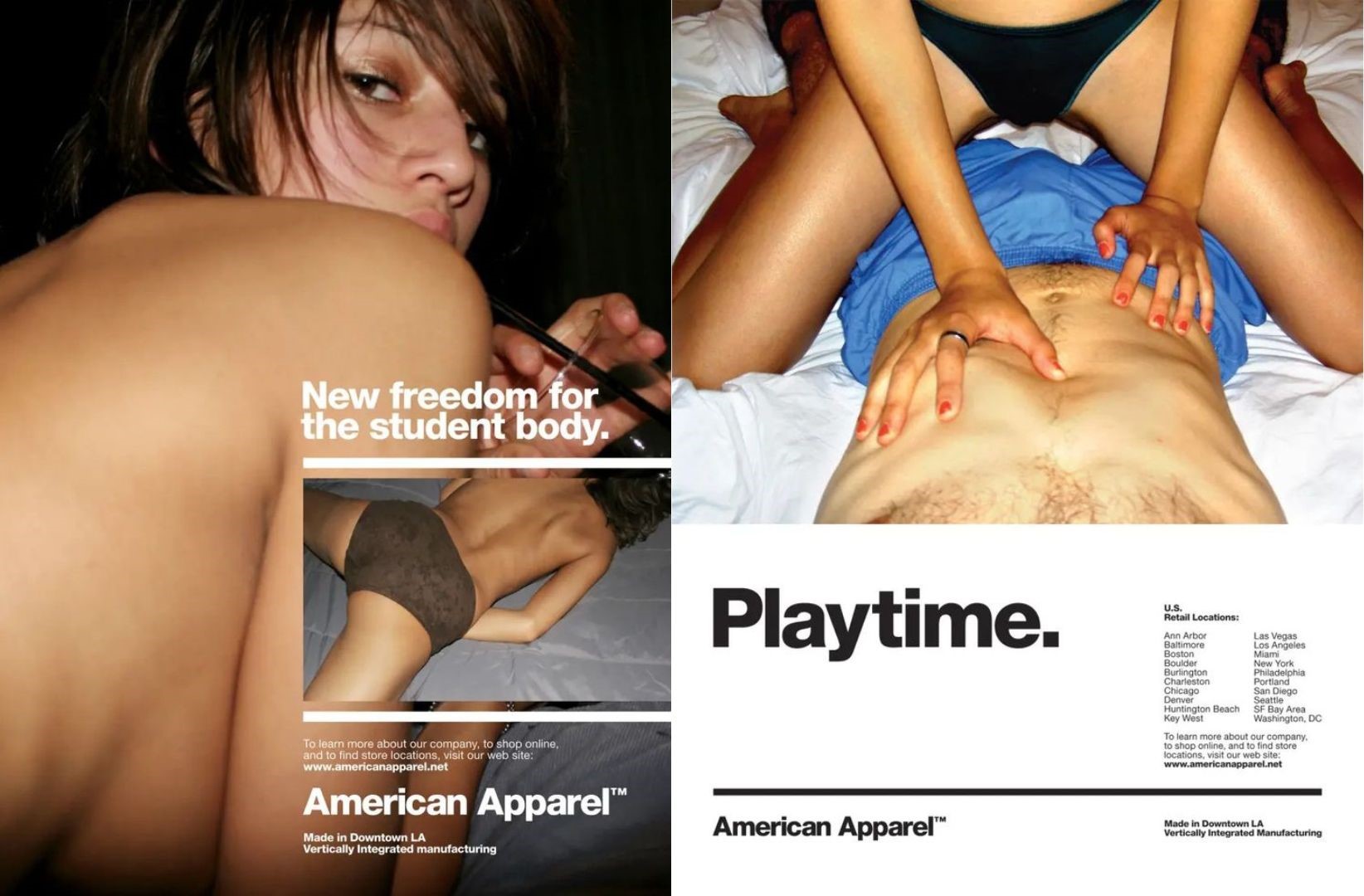
By the end of Strip Tees, Flannery is able to connect all of the dots and document plainly how she and many others fell victim to American Apparel’s promises. She realizes how she was manipulated into dedicating herself and her body to the company, only to understand what a profound miscalculation had been made.
“This was the concept we had been sold on—we were sexually autonomous women, the sole owners of our bodies and experiences and lives. That was what we’d thought we were accomplishing in the bathtub shoot, the shoots some of us did with Dov. But now I could see the cosmic flaw in that plan. There was still a man at the top manipulating all of us, exploiting us for his self-gain. He had built up his whole company to serve him like one big sexy Truth or Dare game, and we all had to play.”
Flannery, Kate. Strip Tees. MacMillan Publishers. 2023. Pg. 165-166.
It is important to note that at no stage does Flannery reject the possibility of liberation for women achieved through total sexual freedom, the breaking down of all that is held sacred about sex, and establishing a total reclamation of the female body. Although some fourth-wave feminists critique this method, citing that in a world that is still very much patriarchal, it is impossible to separate total female sexual freedom from a submission to male desire11, Flannery does not take a position on this philosophy either way. She asserts that in the case of American Apparel, things certainly spiraled out of control and leaned towards the grim reality that Charney’s feminist utopia had been phony on all fronts, simply because he had always been the one pulling the strings.
Controversy, Advertising, Feminism
There is much more to the world of American Apparel beyond Charney’s explosive personal life. The last of the millennials may remember the brand for their iconic items such as the tennis skirt, the grid set, and aesthetic brown paper retail bags that went viral in the final days of Charney’s affiliation with the company. However, those who remember American Apparel at the peak of its popularity may more so associate the brand with its hyper-sexual and controversial advertising.
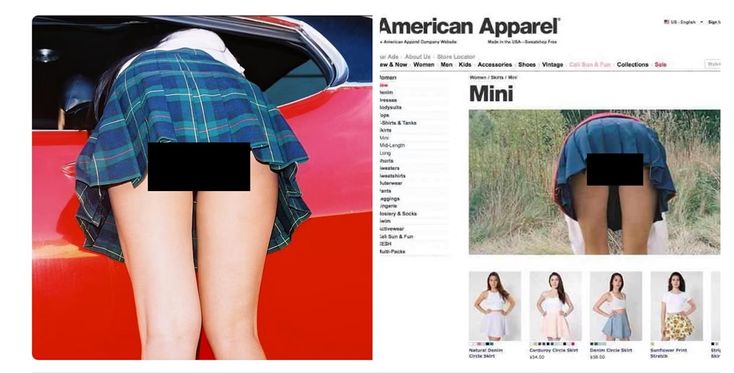
The company’s advertisements often featured young, scantily clad models in sexually suggestive poses, which many critics argued objectified women and perpetuated a culture of sexualization. Further, some ad campaigns were accused of promoting inappropriate themes, such as schoolgirl fantasies12, which were considered particularly controversial when juxtaposed with the young appearance of the models.
There were also allegations that some of the models used in American Apparel’s advertisements were underage, leading to ads being investigated or pulled entirely. American Apparel frequently faced scrutiny and had ad campaigns banned by advertising standards authorities13 in various countries, including the United Kingdom.
However, Charney and his supporters maintain that American Apparel’s advertising not only worked but also did a lot of good. Charney was dedicated to authenticity, almost never using professional models in ad campaigns, and the photo shoots were often not conducted in professional studios. Usually, the models were women who worked for the company, and many of the photos were taken by Charney himself. American Apparel often spoke proudly about not photoshopping or airbrushing their models in any way, showcasing real American clothes on real American girls.
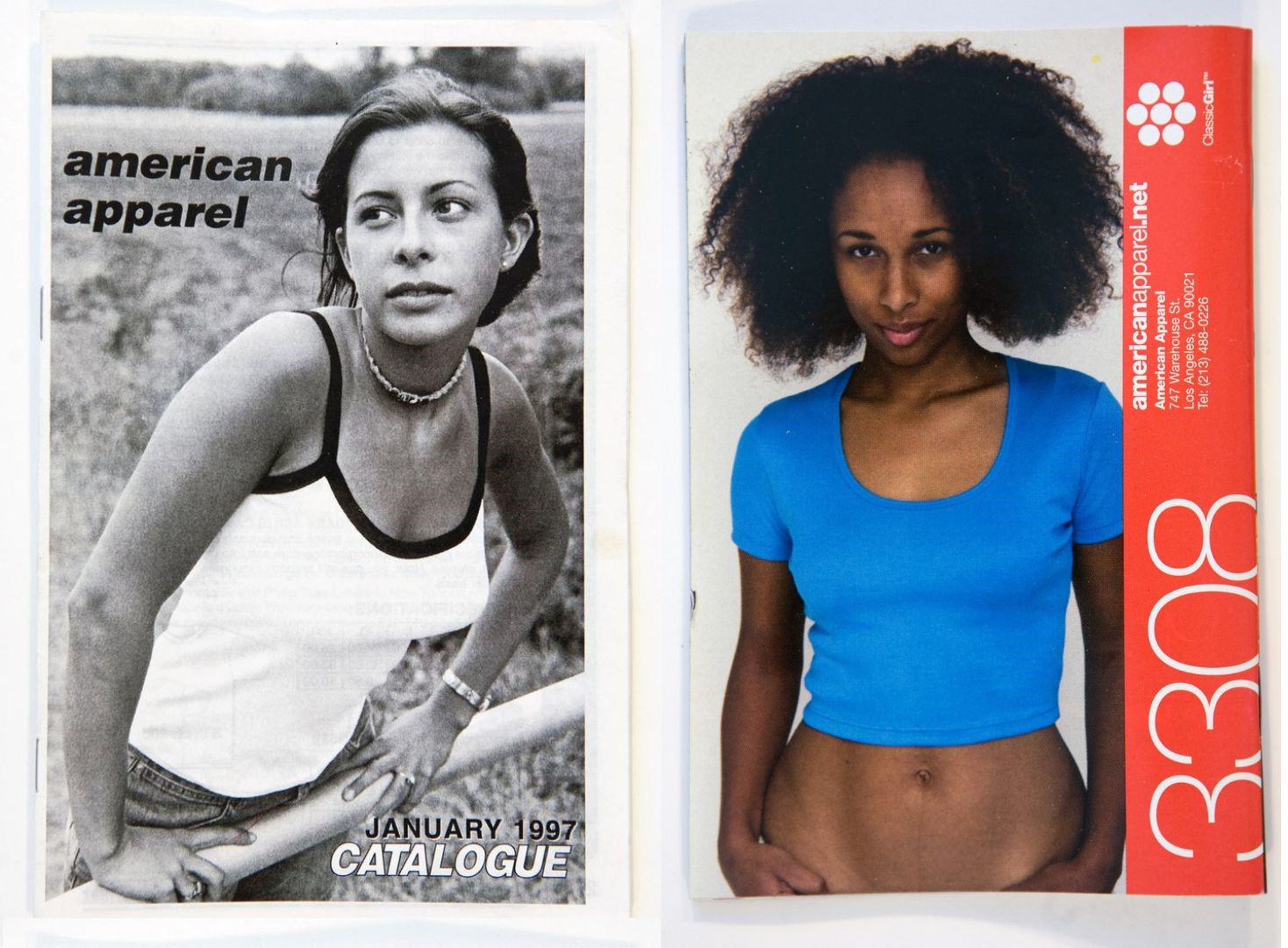
#GirlBoss Feminism At American Apparel
The women-first narrative did well to shade Charney’s intentions. Even Flannery admits that from the outside, the overrepresentation of women in American Apparel’s advertising and labor force14 seemed to be revolutionary at a glance, a pro-women, pro-labor movement that a twenty-first-century feminist could get behind.
“What I noticed right away was that the whole operation appeared to be [a] veritable melting pot… there were no old white guys in button-downs, not a single Boomer to be found. No one looked to be above the age of twenty-five, and I quickly clocked that the majority of the employees were young women… it was obvious—women ruled here.”
Flannery, Kate. Strip Tees. MacMillan Publishers. 2023. Pg. 23-24
In hindsight, American Apparel’s work culture seems to be largely reminiscent of the #GirlBoss style of feminism that was popular with the millennial generation towards the beginning of the twenty-first century. Critics have since noted that the goals of this movement were ultimately flawed15, simply repackaging capitalism with a pink bow placed on top. Although the movement came with the promise of offering women total financial independence and the promise of upward mobility, it was ultimately just a continuation of a larger capitalist project.
In a way, Flannery unpacks this by exploring how she felt exploited by American Apparel, even though she never had a sexual relationship with Charney. Her exploitation took the form of being pressured to keep secrets about the company’s unethical practices, having her likeness used in ad campaigns without her consent, and overall, feeding her a false narrative of what she could expect while working at American Apparel.
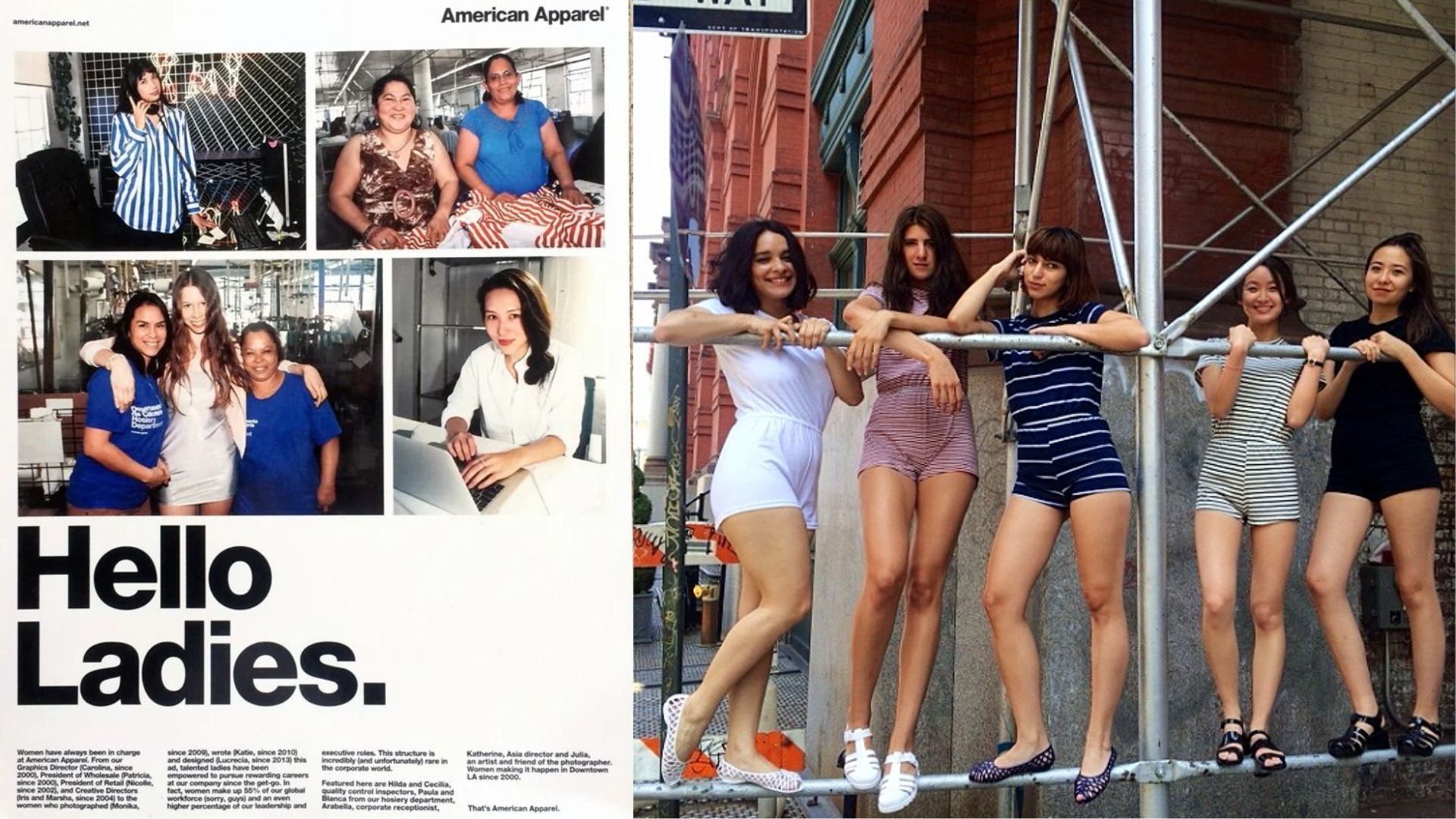
The Hyper-Sexual Work Environment
American Apparel’s mission and values were marketed so well that it was difficult, if not impossible, to see the grim implications of Charney’s workforce. When Flannery describes the increasingly sexualized environment of the first American Apparel retail store, readers begin to question whether all of this is as innocent as Flannery’s twenty-three-year-old self seems to believe.
Flannery describes how she changed as a result of working at American Apparel, including how she adopted a new style and dressed differently to fit in with the company’s culture. She admits indirectly that it seemed, for better or for worse, to be a stark contrast against the person she was before she joined the ranks.
“I began by wearing fewer articles of clothing to the shop. The styles I had been picking up with my clothing allowance in the spring—yoga pants and camis, stretchy pencil skirts with crop tops—were downright Amish compared to my summer looks—micro shorts no bigger than a pair of undies paired with bandeau bra tops.”
Flannery, Kate. Strip Tees. MacMillan Publishers. 2023. Pg. 46.
Throughout Strip Tees, the descriptions of the work culture and environment at the American Apparel retail store are characterized by a distinct emphasis on the hyper-sexual environment Charney had designed. Flannery suggests that, at the time, this was all new, groundbreaking, and countercultural, and the possibility that this was all intentionally perverted did not initially cross her mind.
Flannery describes perceiving working at American Apparel as initially being liberating. She viewed it as a sex-positive environment where women took center stage, had agency over their bodies, and demanded their slice of the fashion and retail economy. However, a skeptical observer is quick to notice that Charney’s decision to surround himself with a harem of young women he has conditioned to share his sexual philosophy is nothing but a venture for his own satisfaction. This reality is consistently reinforced when Flannery reveals the magnitude of American Apparel employees she discovered had slept with Charney.

Despite this realization, Flannery keeps readers cemented in delusion, dragging them deeper down the rabbit hole as she continues to justify to herself and to the audience the warped reality she had endured as a victim of Charney’s cult of personality. While working with Caralee and Gia inside the retail store, Flannery recalls her reaction upon discovering that her coworkers were more intimately involved in American Apparel than she had initially anticipated.
“…I tried turning to feminist reason. Maybe using their sexuality…was actually the most feminist thing of all. Maybe Caralee and Gia were actually using Dov to get ahead, not the other way around.”
Flannery, Kate. Strip Tees. MacMillan Publishers. 2023. Pg. 65.
Escaping The Cult
Although it was unclear to Flannery at the time, her allusion to cult encounters in the very first sentence of the text foreshadows a realization that was only visible in hindsight. The tactic of luring young women to American Apparel and manipulating them into Charney’s inner circle was nothing short of classic California cult behavior. The effect of this indoctrination reaches its climax when Flannery admits that her devotion to American Apparel came at the cost of all her better judgment.
“I felt myself bristle at the suggestion. Anyone attacking American Apparel back then—from an old classmate at Bryn Mawr who said she was sure I had to be sleeping with Dov, or the two ex-employees who had just filed sexual harassment lawsuits, claiming the environment of American Apparel was full of sexual innuendo that created a workplace hostile to women—they were the enemy.”
Flannery, Kate. Strip Tees. MacMillan Publishers. Pg. 113.
Towards the end of the book, Flannery reveals that she eventually left American Apparel, but not of her own volition. Departing from her position there was tough, despite all that she endured. The declining reputation of American Apparel, combined with the already competitive nature of the professional job market, made it extremely difficult for her to move on at that time; however, as the company faced financial difficulties, Flannery was eventually let go and serendipitously found a job as a writer. Strip Tees ends with a moment of optimism as she steps into her new career.

Closing Time — Holding American Apparel Accountable
Strip Tees serves as a confronting reminder of the prevalence of cult worship in the contemporary era. Dov Charney’s vision of ethical labor and innovative fashion was overshadowed by his manipulative, debaucherous behavior and the hyper-sexualized work environment he created. Despite the company’s veneer of progressive, feminist values, the reality was one of exploitation and deception. Kate Flannery’s memoir vividly captures the assonance between the brand’s sleazy public image and its internal dysfunction, all while illustrating how easily individuals can be seduced by the promise of sexual freedom, only to find themselves powerless. Flannery’s story serves as a potent warning: true progress requires not just bold ideas, but also integrity, accountability, and a genuine commitment to ethical principles.
- Nast, Condé. “What Is It about California and Cults?” Vanity Fair, 3 Sept. 2020. ↩︎
- Flannery, Kate. “Kate Flannery, Writer and Author.” Kate Flannery, Writer and Author. ↩︎
- Tabuchi, Hiroko. “American Apparel Files for Bankruptcy.” The New York Times, 5 Oct. 2015. ↩︎
- Ingham, Edmund. “American Apparel’s Bumpy Ride May End with a Bankruptcy, but There Are Lessons for Entrepreneurs.” Forbes, 7 Oct. 2015. ↩︎
- Lipke, David. “American Apparel Refinances with Private Bond Offering.” WWD, 31 Mar. 2013. ↩︎
- Li, Shan. “American Apparel Lays off Hundreds of Workers and Considers Outsourcing Some Manufacturing.” Los Angeles Times, 13 Apr. 2016. ↩︎
- Kapner, Suzanne. “American Apparel Board Moves to Fire Founder, CEO Dov Charney.” The Wall Street Journal, 2014. ↩︎
- Nelson v. American Apparel, Inc., No. B205937, California Court of Appeal, 28 Oct. 2008. ↩︎
- Stempel, Jonathan. “American Apparel CEO Held Teen as Sex Captive — Lawsuit.” NBC News, 9 Mar. 2011. ↩︎
- Huffpost. “American Apparel’s ‘Sex Slave’ Lawsuit Thrown Out.” HuffPost, 22 Mar. 2012. ↩︎
- Badham, Van. “That’s Patriarchy: How Female Sexual Liberation Led to Male Sexual Entitlement.” The Guardian, The Guardian, 2 Feb. 2018. ↩︎
- Sharkey, Linda. “Revealed: American Apparel’s Most Controversial Moments Following Ban on back to School Ad.” The Independent, 5 Sept. 2014. ↩︎
- O’Reilly, Lara. “American Apparel Has Had Another Ad Banned for Appearing to ‘Sexualize a Child.’” Business Insider, 2015. ↩︎
- Darwin, Liza. “American Apparel Debuted a ‘Pro-Women’ Ad Campaign Featuring Employees.” Refinery29, 2015. ↩︎
- Arshad, Muskaan. “Girlboss, Gaslight, Gatekeep: Feminism in a Capitalistic World.” Harvard Political Review, 26 Mar. 2022. ↩︎
